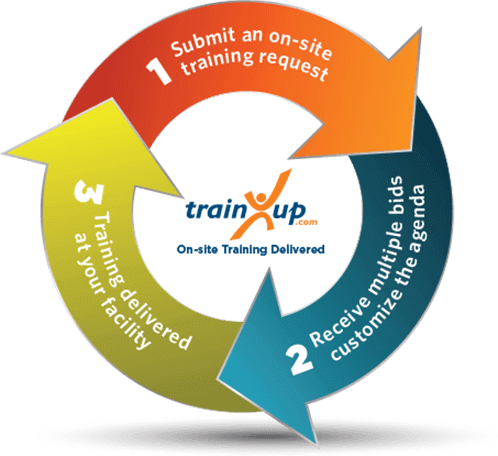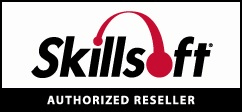
Programming Training Your Way
Or Choose From 55 Information Technology Sub-Categories
- Adobe Training
- ASP.NET Training
- AutoCAD Training
- AutoDesk Training
- Basic Computer Skills Training
- Big Data Analytics Training
- Blockchain Training
- C-C++ Training
- Cisco Training
- Citrix Training
- Cloud Computing Training
- CompTIA Training
- Crystal Reports Training
- Database Training
- DevOps Training
- Disaster Recovery Training
- Dynamics CRM Training
- Google Training
- Graphic Design Training
- IBM Training
- Identity Management Training
- ISC2 Training
- IT Project Management Training
- ITIL Training
- Java Training
- Macintosh Training
- Microsoft .NET Training
- Microsoft Certification Training
- Microsoft Exchange Training
- Microsoft Office Training
- Microsoft SharePoint Training
- Mobile Development Training
- NetApp Training
- Networking Training
- Novell Training
- Oracle Training
- PC Support Training
- Programming Training
- Red Hat Training
- SAP Training
- Scrum - Agile Training
- Security Training
- SEO Training
- SQL Server Training
- SUN Microsystems Certified Training
- System Administration Training
- Testing - QA-QC Training
- UNIX - Linux Training
- Virtualization Training
- Visual Basic Training
- VMWare Training
- VoIP - Telephony Training
- Web Development Training
- Windows Server Training
- XML - Web Services Training
Programming Training Courses and Seminars
TrainUp.com is your one-stop source for the best virtual programming training and live courses nationwide. Start your search now and browse among 102 live instructor-led programming training classes near you, from the industry's best programming training companies such as SkillSoft, BizLibrary, and Hands On Technology Transfer, Inc. (HOTT) TrainUp.com also lists more than 888 self-paced online programming training courses, micro-learning videos, and eLearning bundles. If you have a team to train, we can conduct a course just for you. Check out our onsite on-site programming training page to request a custom virtual or in-person training quote today.
Request Programming On-Site Training. We bring the best instructors to you.
TrainUp.com is your one-stop source for the best virtual programming training and live courses nationwide. Start your search now and browse among 102 live instructor-led programming training classes near you, from the industry's best programming training companies such as SkillSoft, BizLibrary, and Hands On Technology Transfer, Inc. (HOTT) TrainUp.com also lists more than 888 self-paced online programming training courses, micro-learning videos, and eLearning bundles. If you have a team to train, we can conduct a course just for you. Check out our onsite on-site programming training page to request a custom virtual or in-person training quote today.
Live Training
(24 Classes)
Self-Paced Courses
(250 eLearning Courses)
& Video Collections
(168 Bundles)
Up to 37% off Training
Introduction to Python for Data Analytics
ChatGPT and AI Basics for HR Professionals
Introduction to Python
PL-400T00 Microsoft Power Platform Developer
Red Hat OpenShift Development II: Containerizing Applications with Exam (DO289)
VBA with Microsoft Excel
Power BI: Dashboard in a Day
PL-600T00 Power Platform Solution Architect
Tableau for Data-Driven Decision Makers
Advanced Python Programming Techniques
Microsoft Power BI Data Analysis Professional
RHCSA Rapid Track Course with Exam (RH200)
Web Development with HTML5, CSS, and JavaScript
Advanced Java 9
Advanced Java Programming
55366 Querying Data with Transact-SQL
Red Hat JBoss Application Administration I with Exam (AD249)
Red Hat OpenShift Administration II: Operating a Production Kubernetes Cluster with Exam (DO281)
Use Case Modeling Training
Agile in Action
Cyber Secure Coder (CSC)
Python for Data Science
Red Hat Application Development I: Programming in Java EE (AD183)
AI-900T00 Microsoft Azure AI Fundamentals
Time Management Focus and Practices for Greater Results
Java Multi-Tenant Cloud Programming Fundamentals
Other Programming Languages Video Collection
The Building Blocks to Web Development
Improving Your Personal Productivity
Programming Practices Video Collection
Software Requirements Video Collection
Application Integration and Middleware Video Collection
Java EE 7 Web Development Fundamentals
Common Language Infrastructure (CLI) 6 Libraries
Software Process and Metrics Video Collection
Improve Productivity and Time Management Now Video Collection
Java and .NET Programming for IoT

Get Up to 20% off Live & Online Training Courses

We’ll Conduct The Course Just For Your Team

Get Up to 20% off eLearning
SCORM /AICC compliant. Upload content to your LMS
We’ll help customize your curriculum. Send us a request today to preview our entire online training catalog

Customized eLearning Solutions
ILT /Virtual Live to eLearning MicroLearning Video Development Mobile Learning Gamified Learning Flash to HTML5 Conversion
TrainUp.com is your one-stop source for the best virtual programming training and live courses nationwide. Start your search now and browse among 102 live instructor-led programming training classes near you, from the industry's best programming training companies such as SkillSoft, BizLibrary, and Hands On Technology Transfer, Inc. (HOTT) TrainUp.com also lists more than 888 self-paced online programming training courses, micro-learning videos, and eLearning bundles. If you have a team to train, we can conduct a course just for you. Check out our onsite on-site programming training page to request a custom virtual or in-person training quote today.

Request Programming On-Site Training. We bring the best instructors to you.
Programming Courses and Workshops
Software engineering is a lucrative field with a wide range of computer programming languages like Java, HTML, Python, C, Ruby and C++ languages, which are used to write software, webpages and mobile apps. Computer Programming requires the ability to write code, test and debug, and understand program design to write and read code.
Related Programming Training
- Programming training in New York, NY
- Programming training in Los Angeles, CA
- Programming training in Chicago, IL
- Programming training in Houston, TX
- Programming training in Philadelphia, PA
- Programming training in Phoenix, AZ
- Programming training in San Antonio, TX
- Programming training in San Diego, CA
- Programming training in Dallas, TX
- Programming training in San Jose, CA
- Programming training in Indianapolis, IN
- Programming training in Jacksonville, FL
- Programming training in San Francisco, CA
- Programming training in Columbus, OH
- Programming training in Charlotte, NC
- Programming training in Detroit, MI
- Programming training in Seattle, WA
- Programming training in Denver, CO
- Programming training in Boston, MA
- Programming training in Oklahoma City, OK
- Programming training in Las Vegas, NV
- Programming training in Kansas City, MO
- Programming training in Atlanta, GA
- Programming training in Toronto, ON
- Programming training in Vancouver, BC
Join The 50,000+ Companies That Have Purchased Training from TrainUp.com
-
50K+ Companies Trained
Including 90% Of Fortune 500 Companies Have Purchased Training With TrainUp.com
-
300K+ Courses & Videos
Live Instructor-Led (Classroom & Virtual), Self-Paced E-learning & Custom OnSite Training Solutions From Leading Training Providers
-
800+ Expert Instructors
Industry-Leading Subject Matter Experts (SMEs).Tenured &
Award-Winning Instructor Network
Get the latest industry news, recommended courses, & promotions from TrainUp.com sent straight to your inbox.


















